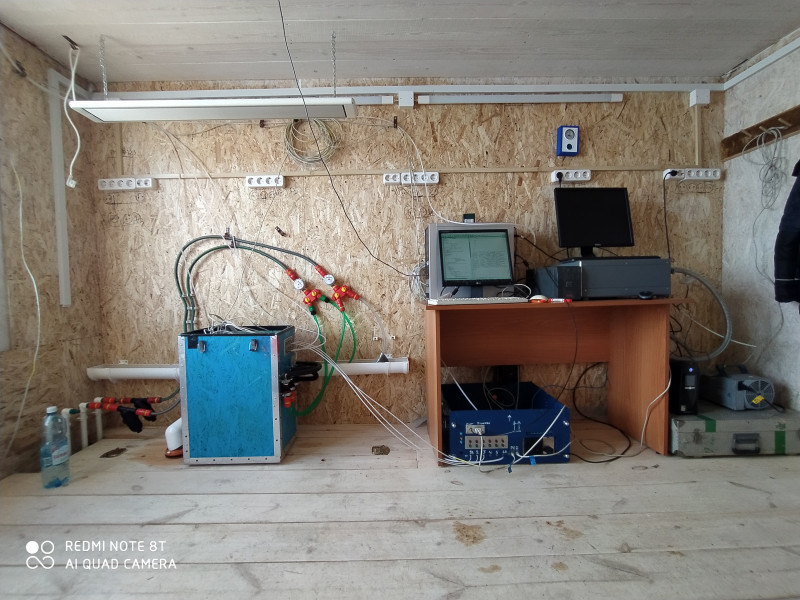Expedition to the Bolshiye Koty settlement, March 23-April 02, 2020
The expedition within the framework of the program “Assessment and Forecast of Ecological State of Lake Baikal and Adjacent Territories under Conditions of Anthropogenic Impact and Climate Change” was carried out together with researchers from V.E. Zuev Institute of Atmospheric Optics SB RAS from March 23 to April 02, 2020, at the research station of Limnological Institute SB RAS in the Bolshiye Koty settlement.
The aims of the expedition were as follows: to study dynamics of nutrients and dissolved gases in the water of the littoral zone of Lake Baikal, to assess their relationship with the photosynthetic activity of algae and chlorophyll content as well as to determine the relationship between the ice properties, processes in water and gas exchange with the atmosphere.
Tasks were as follows:
- Measurement of the content of dissolved gases, nutrients, and chlorophyll on vertical profiles as well as assessment of their diurnal dynamics. Analysis of the production and destruction of organic matter.
- Determination of diurnal course of the CO2 partial pressure in the under-ice layer and atmosphere using an equilibrator, a Picarro gas analyzer, and gas-analytical complexes of Baikal Atmospheric-Limnological Observatory (BALO).
- Study of variations in methane concentration in the atmosphere and under-ice layer. Assessment of the effect of individual emissions and testing the modulation hypothesis with a period of 4.5 hours.
- 4. Identification of diurnal variability in the photosynthetic activity in the surface water and on vertical profiles
There were diurnal measurements of hydrogen index, the concentration of oxygen and bicarbonate ion, fluorescent characteristics in under-ice and near-bottom water as well as continuous measurements of the partial pressure of carbon dioxide and methane in the atmosphere, under-ice and near-bottom water. The diurnal course of dioxide oxygen concentration was observed with a minimum of 18 hours. Water was sampled and preserved to determine nutrients, organic matter, and chlorophyll.








